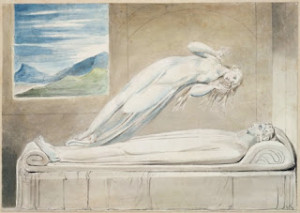 What happens to us when we die? Is there nothing forever, are there realms of the afterlife, have we lived before and will live again in human form? Or will we exist in a different form that we can still call “me”? Are we planning for an eternal outcome or to come back again into another life, maybe a better one, maybe as a spiritual entity, or to become absorbed into Universal, without separate identity? These have been important matters for many for a long time; astrologers too, reflecting their cultures over the centuries, have pondered these issues.
What happens to us when we die? Is there nothing forever, are there realms of the afterlife, have we lived before and will live again in human form? Or will we exist in a different form that we can still call “me”? Are we planning for an eternal outcome or to come back again into another life, maybe a better one, maybe as a spiritual entity, or to become absorbed into Universal, without separate identity? These have been important matters for many for a long time; astrologers too, reflecting their cultures over the centuries, have pondered these issues.
If we opt for a final destination at the end of our lives, is there an place in Heaven for the good people and a place in Hell for the bad? Do bad things happen to good people because of fate or the will of God or because “life sucks” or is it because of bad actions in previous lifetimes?
From astrology’s point of view, do difficult features in a birthchart signify God’s assignment for you in life or previous karma to be worked out and indications for what’s ahead?
If we opt for reincarnation or rebirth, as many do in our modern world, there are even more questions. Are we on a slowly evolving path over multiple lifetimes, and, if so, does this path parallel the eventual destiny of the human race and the planet itself? If there is no preordained evolutionary path, do we aim instead for conscious instead of compulsive rebirth? If we screw up in this lifetime do we go down the evolutionary ladder and are reborn maybe as a shark or a mouse, or do we get a chance at a do-over in similar circumstances the next time around, again and again until we get it right? Are there factors in the astrological chart that indicate how we can spiritually grow from this lifetime to the next?
Then there’s the question of a universal or personal divine nature behind all this – or, colloquially put, “who’s keeping score?”
The idea of multiple lifetimes has become more popular in the west and frequently appears in New Age thinking and some modern astrology. But it’s not such a new idea. It is just one feature of the concept of soul, a concept that has been applied in different ways – psychologically, spiritually, astrologically – over a very long time.
Three Versions of “Soul”
During the past few years Enid Newberg from Kepler College and I have worked to unravel some of the concepts of soul and their applications to astrology. We delighted in examining our own assumptions against the backdrop of other perspectives. We started a program at Kepler exploring developments of soul – and their relationships with astrology – over the centuries. Our work fell into the three categories of 1) character, 2) calling, and, subject of the next course, 3) karma.
Soul as character depicts those qualities we exhibit in our daily life, including the relationship between soul and body and between being living and being dead. Astrology and modern psychology both delve into these realms of soul. If we are mainly body with life, then soul is character as the manifestation of an individual’s life force. Our sources are from ancient west and India with a comparative look at the modern era.
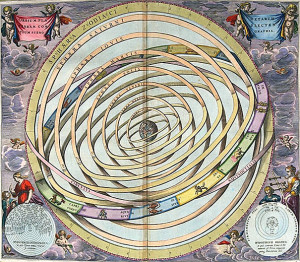 Soul as calling recognizes the deep connection we have between our individual lives and the universe in which we live. Soul manifests as our place in the larger world and what that larger world wants from us. This connection is often obscured in modern living but has a long history in astrology; one could say that this connection is the basis of astrology. We look at spirituality in the late antique world, alchemy, Renaissance sympathetic magic, and soul in nature and our surroundings.
Soul as calling recognizes the deep connection we have between our individual lives and the universe in which we live. Soul manifests as our place in the larger world and what that larger world wants from us. This connection is often obscured in modern living but has a long history in astrology; one could say that this connection is the basis of astrology. We look at spirituality in the late antique world, alchemy, Renaissance sympathetic magic, and soul in nature and our surroundings.
Soul as karma explores what incarnates from lifetime to lifetime. In most Eastern religious views, reincarnation is a given. Over the centuries this idea has not been in the Western mainstream, but it had some traction in the world of antiquity and resurfaced from time to time throughout the centuries. The most recent expression of reincarnation has its origins in the late 1800’s and the rise of different types of spiritual or evolutionary astrology. This is the subject of this short essay and our upcoming course.
Death and the Realms of the Afterlife
 Once upon a time people began to live within of stable societies and urban cultures and they looked to the surrounding sky for order and for messages from the immortal gods. Over a long time attention to the movements of the heavens broadened from an interest in social and natural order to include the life and fate of people like you or me. Religious priorities also showly changed from cosmic maintenance to individual and world salvation.
Once upon a time people began to live within of stable societies and urban cultures and they looked to the surrounding sky for order and for messages from the immortal gods. Over a long time attention to the movements of the heavens broadened from an interest in social and natural order to include the life and fate of people like you or me. Religious priorities also showly changed from cosmic maintenance to individual and world salvation.
This change coincided with the beginning of a split between our lives as particular beings in time and a deeper timeless nature that is beyond life and death. In different languages, the word “breath” that signifies a physical life-giving principle became a “soul” differentiated from the body.
This manifested in how ancient people dealt with death. In many cultures, particularly the Roman and Chinese, deceased ancestors continued to be part of the family and were revered through ritual – they were still around in spirit. Egyptian culture displayed a great concern for the continuity between life and afterlife when the soul’s eternal fate is judged by cosmic authorities. Homeric Greece posited an underworld in which there would be punishment for some but a rather dreary shadowed existence for most, including their greatest heroes. Alternatively, those who lived very evil lives were subject to death or punished in the afterlife but that those more virtuous could partake of an eternal joyful destiny, an “Island of the Blessed” somewhere on earth.
Christian culture posited fixed realms of an afterlife within which one could be damned or saved depending on the quality of that person’s lifetime. Eventually the final blissful place of the saved was conceived in the heavens, beyond the visible planets into the realm of eternity. The outstanding literary representation of this viewpoint in the medieval era is Dante’s Divine Comedy. The modern era has almost nothing to say about these issues.
Multiple Lifetimes in the West
We often forget that the idea of multiple lifetimes appears in ancient Western thought. Not in religion but in philosophy this idea had the clearest expression, less as worked-out points of view but as thought experiments and rhetorical devices.
Pythagoras, better known for his arithmetical genius and his metaphysics of numbers, followed the contemporary Orphic tradition of death and renewal. His teachings on previous lives, however, were unsystematic and anecdotal. In Plato’s dialogue Meno, to account for our being able to learn objective universal truths such as those of geometry, he posited the idea of learning as “recollection” from hypothetical pre-incarnations.
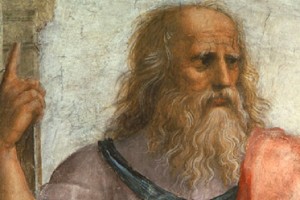 Plato also uses multiple lifetimes to justify the philosophical life. In a speech given to Socrates in the Phaedrus, the human soul has upward and downward inclinations. From our journeys in the heavens with the gods we descend and lose our wings and, depending on how much truth we were able to assimilate up among the gods, we are born into different stations in life. After several lifetimes and long intermediate periods, and those who lived the philosophical life over and over may regain their wings; others may have to endure much underworld suffering and they may find themselves reborn as animals or people with difficult lives.
Plato also uses multiple lifetimes to justify the philosophical life. In a speech given to Socrates in the Phaedrus, the human soul has upward and downward inclinations. From our journeys in the heavens with the gods we descend and lose our wings and, depending on how much truth we were able to assimilate up among the gods, we are born into different stations in life. After several lifetimes and long intermediate periods, and those who lived the philosophical life over and over may regain their wings; others may have to endure much underworld suffering and they may find themselves reborn as animals or people with difficult lives.
At the end of Book X of the Republic is the story of Er who came back from death to tell the tale of what happens between lifetimes. He relates that the soul, departed from life, goes upward or downward for a long time, based on the virtue or lack of virtue in their previous life. At last members of the two groups mingle and journey to a heavenly destination from where they choose their next lives among lots. It is most critical to make the right decision and not be hasty to impulsively choose a life that appears happy but has a bad end. Instead, if one has previously trained to discern good and evil, to know the difference between true happiness and seeming happiness but misery, one can make better choices.
The Indian Subcontinent and Beyond
The Indian subcontinent has given us a set of traditions on multiple lifetimes that are part of two world religions and have informed much modern Western esotericism, New Age thinking, and modern astrology.
Within both Hindu and Buddhist traditions, the doctrine of reincarnation or rebirth is closely allied to that of karma: one’s fate after death is not based on external judgment but the mechanics of cause and effect. A previous lifetime’s virtuous or non-virtuous actions result in happy or unhappy future conditions. Because our habitual patterns of thought contain previous karma that provides the context for activity, we are usually reborn compulsively in line with our actions in previous lifetimes. However, by changing how we think and what we do we can change the ripening of previous karma and the trajectory of our successive rebirths.
This leaves open the possibility that the astrological natal chart depicts the conditions that have resulted from our habits of thought and activity, our previous karma. This concords with much astrology from the Indian subcontinent; Indian astrologers are loath to consider specific natal chart factors to be “karmic”, instead one considers the entire chart.
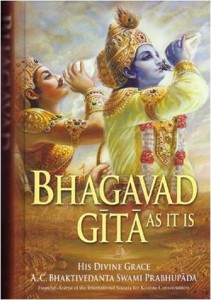 Here we find a difficulty of scale: inconceivably large amounts of time, past and future, may contain innumerable past and future lifetimes. Over many lifetimes we have accumulated so much positive and negative karma that no single lifetime can provide all the conditions for their ripening. Here we find the notion of the cycle of existence or samsara, from the Sanskrit word for “wandering”, by which we go round and round – unless we can find a way to step off the merry-go-round or the whirlpool. However, according to some systems the overall quality of your karma could be judged by noting the conditions of your present lifetime; unfortunately this idea was used to justify India’s stratified caste system.
Here we find a difficulty of scale: inconceivably large amounts of time, past and future, may contain innumerable past and future lifetimes. Over many lifetimes we have accumulated so much positive and negative karma that no single lifetime can provide all the conditions for their ripening. Here we find the notion of the cycle of existence or samsara, from the Sanskrit word for “wandering”, by which we go round and round – unless we can find a way to step off the merry-go-round or the whirlpool. However, according to some systems the overall quality of your karma could be judged by noting the conditions of your present lifetime; unfortunately this idea was used to justify India’s stratified caste system.
Different traditions depict different ways to end the samsaric cycle of compulsive rebirths. The Hindu tradition discusses union with divinity that is beyond the cycle of existence, and Buddhism discusses nirvana, the extinguishing of all causes of further suffering. Either path is the result of completing a spiritual journey from lifetime to lifetime or within one transformative lifetime. In the Bhagavad Gita we read of extinguishing karma and eventual salvation through “finding inaction in action” i.e., not being attached to the fruits of one’s acti

vity. Mahayana Buddhism, however, aims to convert compulsive rebirth to intentional rebirth so that one is reborn and lives for the benefit of others.
Outside of India, the text known as The Tibetan Book of the Dead discusses the “bardos” or transitional states that occur during one’s lifetime and between lifetimes. According to this tradition, the time of one’s death is an opportunity for enlightenment and becoming a bodhisattva, as are the two bardos that follow death. In a manner strikingly similar to Plato’s story of Er at the end of The Republic, our previous actions and attitudes (karma) provide the basis for our selection of current life conditions.
The Modern Western Discovery of Karma and Reincarnation

Helene Blavatsky 1831-1891
Helene Blavatsky 1831-1891 Russian émigré and world traveler, developed the idea of Theosophy that posits a common ground of wisdom within humanity’s different religious traditions. Blavatsky was strongly influenced by the traditions of the Indian subcontinent; some others following her lead, notably Alice Bailey of the twentieth century, took a more western Christian approach. Theosophy provided an opening for the ideas of reincarnation that combined Eastern and Western elements.
According to Blavatsky and others, our sojourn within the material realm is for the purposes of individual learning and correction and for collective evolution – as the popular bumper sticker says, we are not human beings having a spiritual experience but spiritual beings having a human experience. The eventual endpoint is unification with the Universal. Blavatsky’s thinking and those subsequent to her were also strongly millennialist, according to which humanity as a whole is progressing toward a happy next phase and we too are part of this transition.
Our trajectory as humans is ultimately away from the material and toward the spiritual, and after death we may evolve into a new plane of spiritual existence. We may become “Ascended Masters” and, taking spiritual form on the periphery of the planet, help humanity on its path toward happier times symbolized by the “Age of Aquarius.” Theosophy and those influenced by theosophy valued spiritual evolution as a group endeavor culminating in leagues of spiritual beings helping the planet and beyond. They were less interested in individual salvation for its own sake.
Attitudes toward reincarnation itself varied: Blavatsky felt that reincarnation occurs when an individual hasn’t yet mastered the material realm and needs to try again to “carry out the purpose of the creative intelligence.” Others argued for a more gradual progression through lifetimes whereby we are here to learn specific lessons, after which we move onward in evolution toward taking our place within the Universal Over-soul or divine Light. We may backtrack and karma may dictate an inferior lifetime next time yet even this is part of our learning progress.
Astrology, previously marginalized after the scientific so-called enlightenment of the eighteenth century, re-emerged at this time with a changed character. According to theosophical thinking, the spiritual and material have a reciprocal relationship; because astrology can provide a bridge between the spiritual and material it was recast as a “divine science”. This provided an opening whereby astrologers could look at one’s spiritual path as an incarnating individual.

Alan Leo 1860-1917
As theosophy posited that the true essence of the different world religions are within their “esoteric” traditions, astrology itself was seen as having “exoteric” and “esoteric” dimensions. If you’re interested in external matters like marriage, career, and money, ordinary traditional astrology is fine but shallow; for the rest of us who are on a spiritual journey that may encompass many lives we need to look at the astrological chart and predictive indicators in a different way. Although one could pivot between these two dimensions of astrology, the tendency, especially in the United States, has been to pick sides.
Alan Leo’s Esoteric Astrology, first published in 1913, superimposed esoteric meanings onto astrology’s symbols. He revised how we think of elements, modes and the interrelationships of planets. Importantly, Alan Leo’s emphasis on the “Solar Logos” and using the individual’s Sun sign to reveal lessons of this lifetime helped inaugurate Sun-sign astrology that continues to be a popular idea of astrology.

Alice Bailey 1880-1949
In the first half of the twentieth century, Alice Bailey followed the theosophical program but added a strong emphasis on the “Seven Rays” that influence the planet and its inhabitants from stellar spiritual realms. Es
oteric Astrology, first published in 1951, is the third volume of A Treatise on the Seven Rays and brought in new features for astrological analysis. In addition to reframed natal chart factors, each individual manifests one or several Rays (that may be found in the astrological chart as well as the person’s life) that indicate the lessons of this life and the future direction of the incarnating soul.
Beginning with The Astrology of Personality (1936) that he dedicated to Alice Bailey, Dane Rudhyar also reformulated astrology’s symbol systems and fused spiritual astrology with “person centered” or “humanistic astrology” following trends in psychology and culture. He also contributed much astrological technique, focusing on the archetypal cycle and depicting levels of astrological symbolism and interpretation within the context of humanity’s spiritual progress. In many ways Rudhyar built upon the scaffolding constructed by the theosophists and Alan Leo and has greatly influenced this generation of astrologers.

Dane Rudhyar
1895-1985
Modern Astrology and Reincarnation
Many astrologers continue to follow the Alice Bailey’s program and I recommend Alan Oken’s Soul-Centered Astrology (1991) to interested readers. However, most people who work with “spiritual” or “soul-centered” astrology have dropped the elaborate metaphysics we see with the theosophists and Alice Bailey but have adopted some ideas from Dane Rudhyar. Importantly, they have reduced the importance of participating in an upcoming Aquarian Age to focus solely on the astrology of the individual.
In traditional astrology and in much modern astrology the Lunar Nodes, the places of intersection between the apparent paths of the Sun and Moon, were not greatly emphasized. However, in recasting astrology’s symbols, Dane Rudhyar made the distinction between the South Lunar Node as a place of past-centered habitual activity and the North Lunar Node indicating one’s best direction 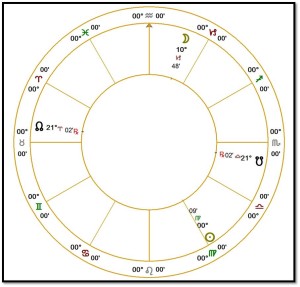 of growth. In the generation after his death, many astrologers have used the Lunar Nodes prominently for psychological and spiritual issues. The Lunar Nodes were used to point out psychological vulnerabilities and possibilities but also the karmic debts from previous lifetimes, the assignment of this lifetime, and the trajectory through which you are moving in your soul’s evolution. The placement of the planets Pluto and Uranus and their opposite points have also been used for this purpose.
of growth. In the generation after his death, many astrologers have used the Lunar Nodes prominently for psychological and spiritual issues. The Lunar Nodes were used to point out psychological vulnerabilities and possibilities but also the karmic debts from previous lifetimes, the assignment of this lifetime, and the trajectory through which you are moving in your soul’s evolution. The placement of the planets Pluto and Uranus and their opposite points have also been used for this purpose.
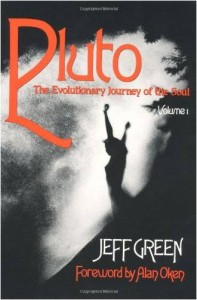 Appropriately this is termed “Evolutionary Astrology”, and its most famous adherents are Jeff Green and Steven Forrest. These teachings and practices follow modern astrology’s tendency to reduce chart factors. Gone are the multiple hierarchies; reincarnation has become a strictly personal endeavor. In many ways Evolutionary Astrology uses the ideas and language of psychological astrology projected onto the larger canvas of multiple lifetimes.
Appropriately this is termed “Evolutionary Astrology”, and its most famous adherents are Jeff Green and Steven Forrest. These teachings and practices follow modern astrology’s tendency to reduce chart factors. Gone are the multiple hierarchies; reincarnation has become a strictly personal endeavor. In many ways Evolutionary Astrology uses the ideas and language of psychological astrology projected onto the larger canvas of multiple lifetimes.
Coinciding with Evolutionary Astrology is a trend that adds chart factors. Perhaps this began with Alice Bailey’s abundant use of fixed stars (esoterically interpreted) and the planet Vulcan, theoretically within the orbit of Mercury around the Sun. Today’s astrologers who follow the modern evolutionary model also cite Chiron and other planetary object they call “Centaurs”, the Dark Moon or Lilith, some asteroids and some planetary objects within the Kuiper Belt. The Vertex, the intersection of the ecliptic and prime vertical in the west, has been increasingly used by spiritual astrologers. Chiron, discovered in 1977, has been in continuous use for the longest time; the use of the others is still in its infancy.
Astrology oscillates over the centuries from Saturnine simplification to Jupiterian increase of complexity and then back. I expect the next generation of spiritual astrologers to incorporate some of these new factors into a complex but coherent astrological architecture and maybe bring back some ideas from somebody’s Esoteric Astrology, from that of Alan Leo or Alice Bailey or both.

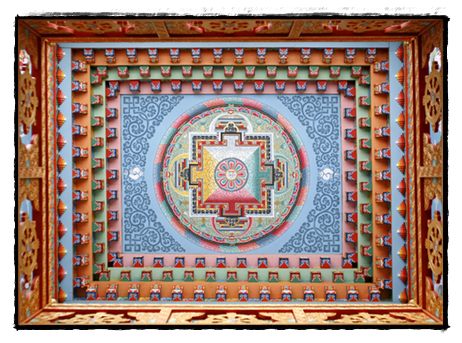
Thanks to a friend I received a link to this website. Very interesting stuff.
I’ve been studying Jungian psychology, astrology, and John Steinbeck since the mid 1960s and applying what I learned for decades. I wrote an article, Carl Jung’s Psychology and John Steinbeck’s Horoscope that appeared within the last year on http://www.Steinbecknow.com: Here’s a link. http://www.steinbecknow.com/2015/05/20/carl-jungs-john-steinbeck-horoscope/. (I have other publications on the site, the C. G. Jung page (www.cgjungpage.org), and in professional journals (I am a retired instructional designer.
In building my astrology skills over the years, I formed a number of practical opinions and conclusions based upon personal observations, my Jungian knowledge, and the trial and error application of technique.
Regarding the description of the “soul” in the article, when I consider the individual, I I find it helpful to view the Self“ as Jung described it in his “Structure And Dynamics of the Psyche” including the persona (conscious and unconscious projections/perceptions), The Ego, The Personal and Collective Unconscious, and the Soul or spirit. Jung was an empiricist and an adept advocate of astrology,
I believe that great strides may be made once psychology as a uniform lexicon an agreement on terms and concepts. As a result, many natural sciences do not consider psychology a full-blown science at all. (t is, in fact, but it has the unique problem that the instrument for research and communication (the individual human psyche) is also the subject of the research. No other science has such a handicap.
Great advances could be made in interpreting patterns of a wheel chart when we share a common language. Thank you for the article.
I would like to know more about astrology and formation of Hanan soul